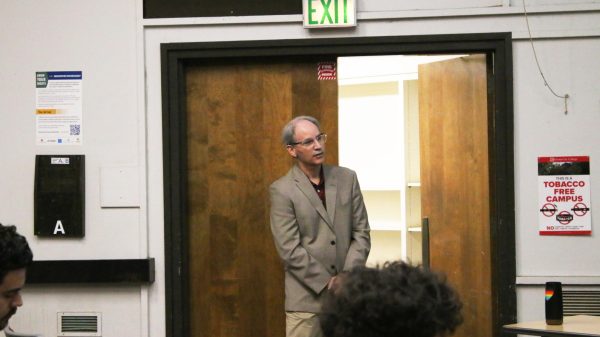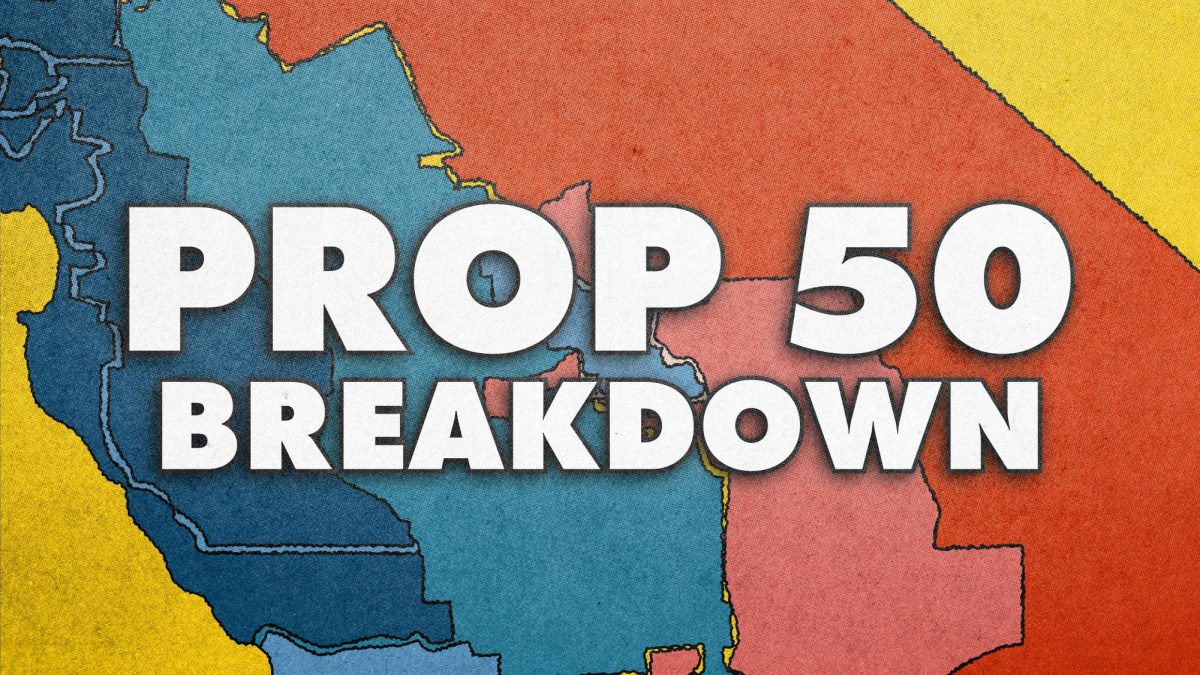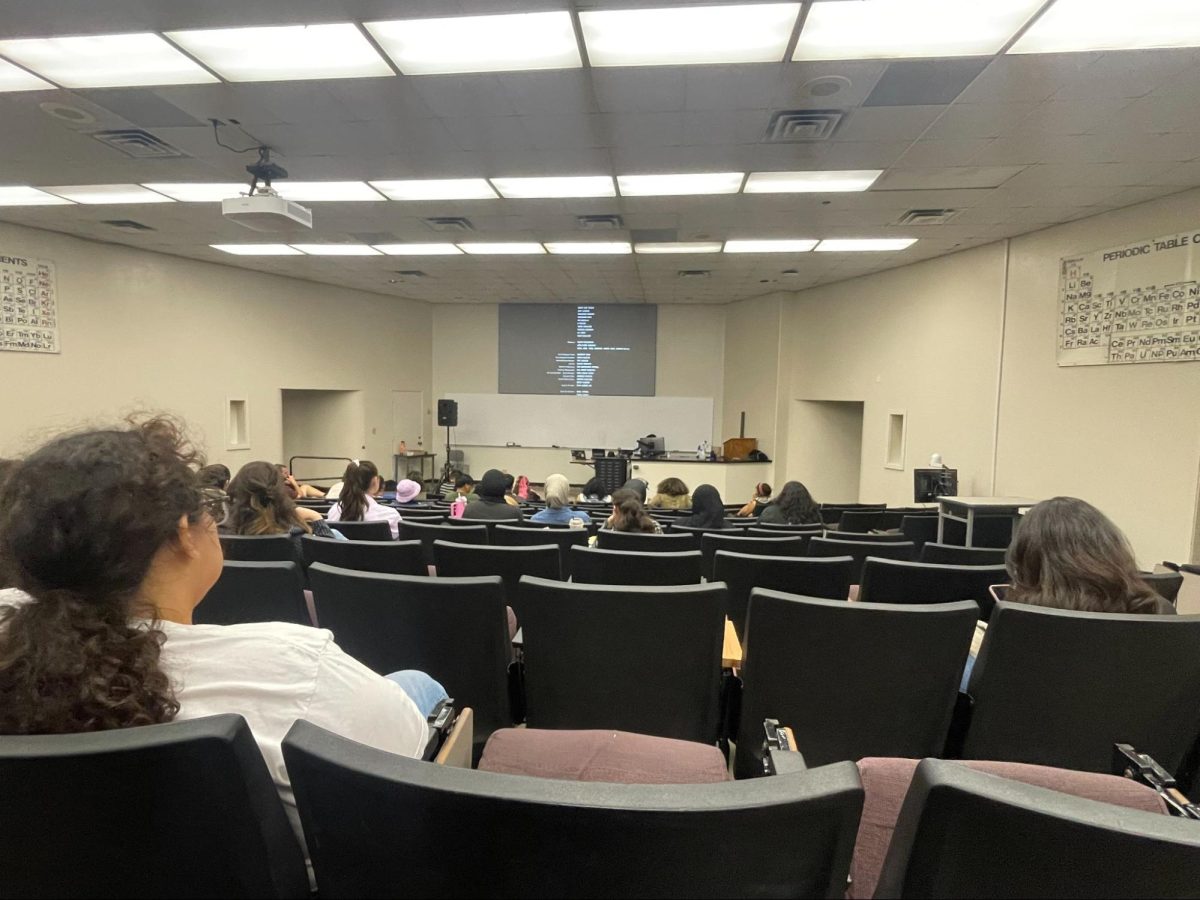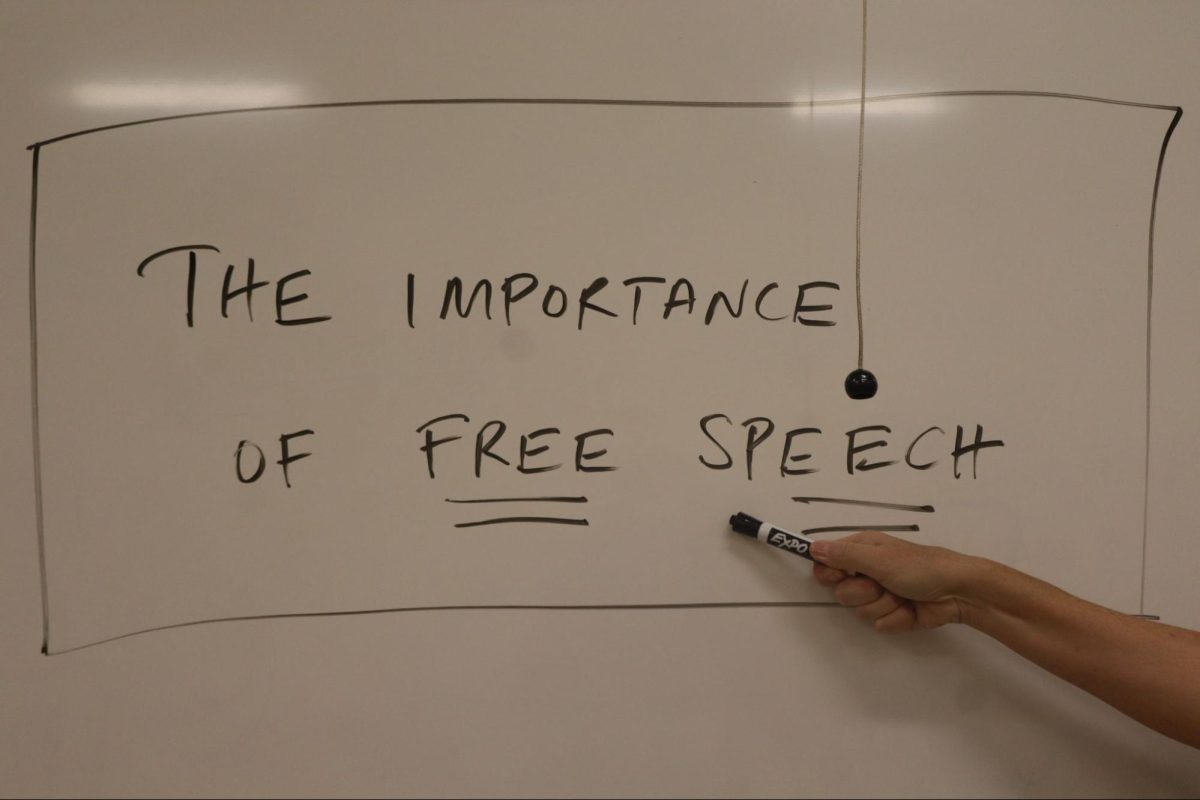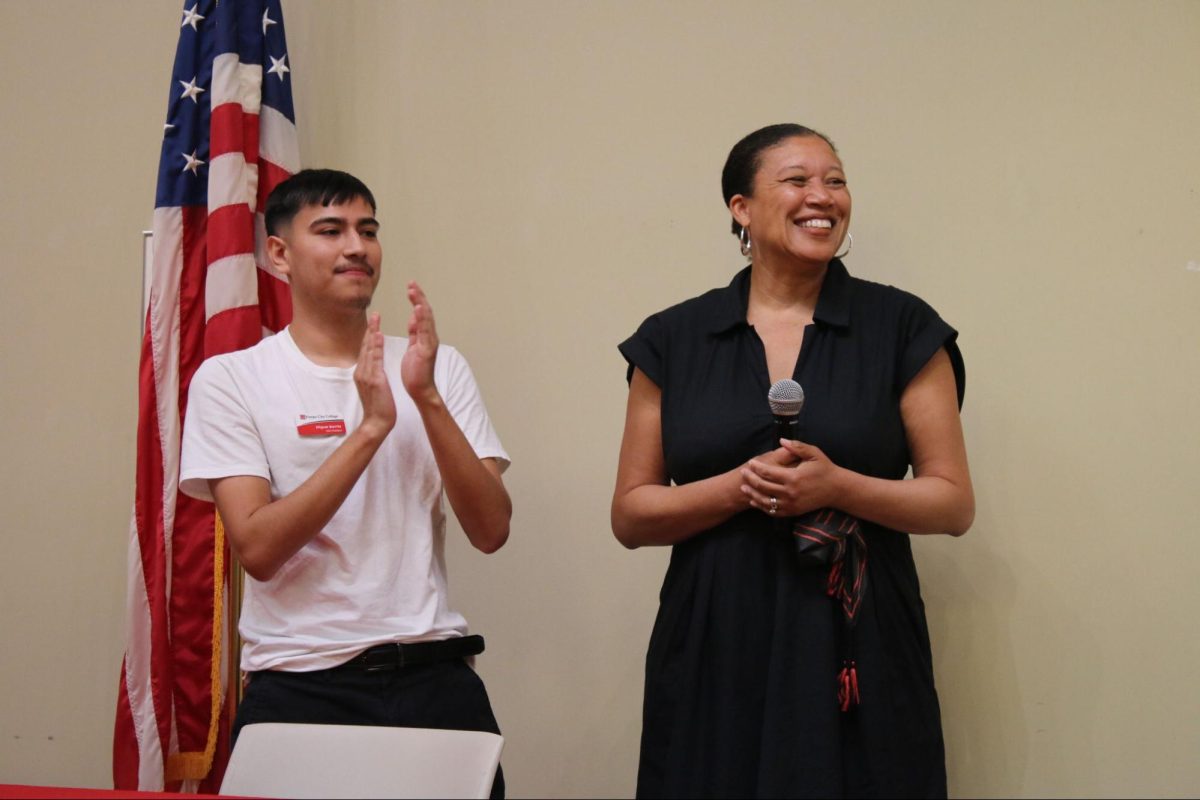In the upcoming special election on Nov. 4, Californians will vote on Proposition 50, also known as the “Election Rigging Response Act.” The state would use new legislature-drawn congressional maps until 2030, potentially securing roughly five more Democratic seats in the House of Representatives. On the evening of Oct. 2, Fresno City College political science professors gathered to talk on a panel about the ballot and inform people on voting.
At the event in Forum Hall, professors Alana Jeydel, Mark Trezza, Nick Hernandez and Austin Schutz addressed what Prop. 50 is, why it’s on the ballot and discussed its impact to an audience of around 70.
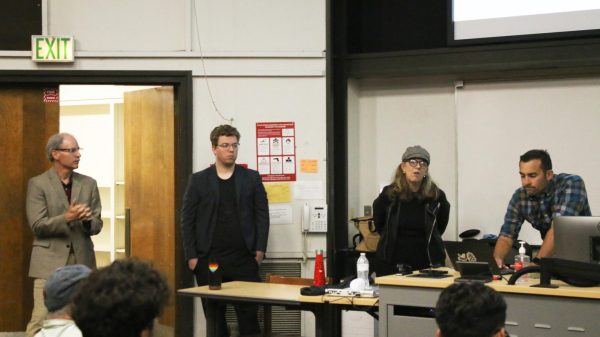
The measure is proposed as an effort to redraw district lines accordingly to gain more Democratic-held districts, which will give more power and balance to Democrats in the House of Representatives.
A yes vote on Prop. 50 authorizes temporary changes to California’s congressional district map in response to Texas partisan redistricting, according to the Legislative Analysts Office.
A no vote on Prop. 50 means that the maps drawn by the California Citizens Redistricting Commission will continue to be used in California until the new maps are drawn.
Redistricting and reapportionment are key factors in the upcoming measure. Professor Jeydel broke down how the maps being redrawn will reapportion seats in the House of Representatives.
Prop. 50 was outlined as a response to the Texas State House passing congressional maps back in August, which targeted five Democrat held seats in the House of Representatives.
Jeydel explained the constitution requires a country-wide census every 10 years, an estimate of population in the United States.
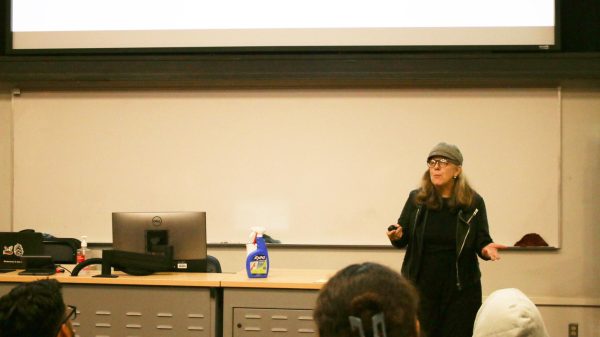
Following the census, he Census Bureau uses the “Equal Proportions Method” to allocate representatives in the house proportionally to the population of each state. The number of representatives may change each census.
In 2008, Proposition 11 (Voters FIRST Act) was passed by voters which gave the California Citizens Redistricting Commission (a 14-member commission made up of an independent non-partisan group with equal representation), the power to redraw legislative districts.
In 2010, Proposition 20 was passed, which gave the commission more power, including congressional districts.
According to Schutz, this made for fairer, competitive, district lines while also giving the authority back to voters.
Now, Prop. 50 would amend the California state constitution and temporarily suspend the California Citizens Redistricting Commission drawn the maps in order to allow for more Democratic-based districts.
Schutz said that it would change the law that is there.
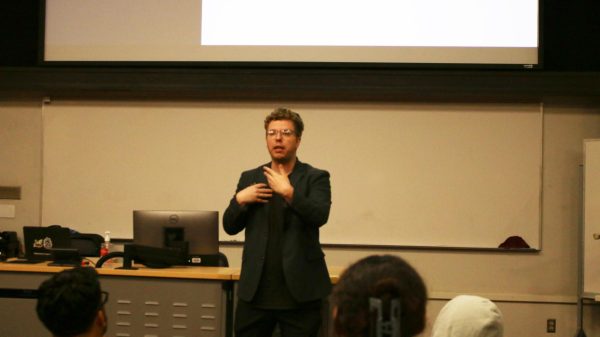
“You’re giving up the power to allow the legislature to draw partisan maps. It might be that you think it’s worth it at the moment, it’s up to you all,” Jeydel said.
The Texas process for redistricting is different from California in that it does not go through the voters but through the state legislature, which decides how maps are drawn, according to Hernandez.
“It was a relatively simple process to get this redistricting mid-decade off election year map passed through their state house and then signed by the governor,” Hernandez said.
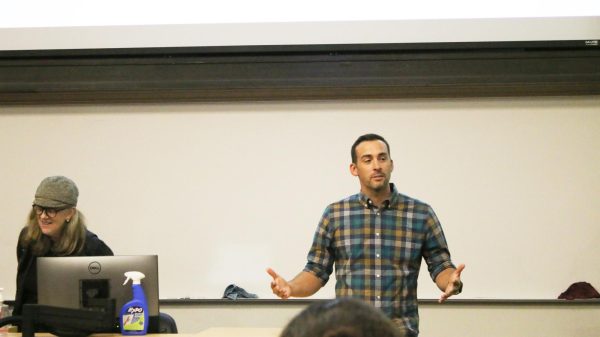
Historically, the majority party often loses seats in midterm elections, and there was a high chance of Republicans losing seats in early November.
“Adding five relatively safe Republican seats in the House of Representatives allows you to potentially lose some seats and still maintain the majority,” according to Hernandez.
Prop. 50 is a way for the Democratic Party to counteract the seats being lost in Texas.
“This gives the Democrats in California, specifically Newsom, some pushback against the administration and Republicans in Congress, it allows them to say that we’re doing something, we’re fighting back against it,” Hernandez said.
States are currently going through different court cases regarding partisan gerrymandering (when redistricting is used to benefit a particular group), limitations of gerrymandering through state constitutions and state measures to prevent partisan gerrymandering.
However, California’s Prop. 50 will not be settled by the court, it will be settled by voters, according to Schutz.
Early ballots were sent in mail starting Oct. 7 and voters can submit them through mail, official drop-off locations or vote in person on Nov. 4 at a local voting center. The last day for voter registration is Oct. 20.
“Voting right now, regardless of what you want to vote for, is going to be really, really important,” Schutz said.
Schutz said that a yes vote may depend on your concern about the balance in national politics regardless of which direction it goes. A no vote might be how you uphold your own principles and precedents against the measure.
“Who was it that said democracy is messy?” Trezza said.
